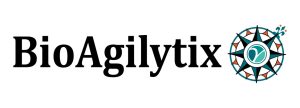Webinar Q&A follow up: Bioanalytical challenges for cellular immunogenicity testing using validated ELISpot assays

Thank you to everyone who attended our webinar ‘Bioanalytical challenges for cellular immunogenicity testing using validated ELISpot assays‘ in association with BioAgilytix (NC, USA). Below are responses from speakers Michelle Miller and Josh Cubbison to the questions posed by our audience during the live event. We hope this is a useful resource and thank those who submitted these thoughtful questions.
Q) How do you define your ULOQ? What type of stimulation is used?
We define our ULOQ as the highest value (i.e. maximum spot count) that can be quantified with acceptable precision (CV ≤ 30%). At higher numbers, the signal becomes saturated and the software is not able to accurately resolve individual spots. The 2022 and 2020 ELISpot white papers referenced in our presentation define the ULOQ as ≤450 spots per well. To confirm this value, peripheral blood mononuclear cells (PBMCs) stimulated with CEF peptides or anti-CD3/anti-CD28 antibodies were serially diluted and responses up to 450 spots/well were assessed for acceptable precision.
Q) For the global assay validation, what approach are you taking to assess the response to a specific peptide pool?
The assay specificity was evaluated using a titration of CEF peptide pools across multiple commercially available PBMC donors. The linearity of response was then evaluated for each donor and peptide titration to demonstrate specificity. If a known donor is positive for response to a particular therapeutic peptide, then additional validation experiments can be performed using the therapeutic-specific peptides.
Q) In validation, what do you think about testing the linearity with different cell concentrations instead of peptide concentrations?
Titration of peptides was performed in validation to demonstrate specificity of response, but the data was not assessed for linearity. Linearity with different cell concentrations was tested and this is highly relevant to clinical sample analysis as samples with low recovery on thawed or limited sample volumes may occur. These samples can then be tested at a lower plating concentration within the demonstrated linear range. We do use minimum thresholds for cell plating (100,000 cells/well) to ensure robust and reliable data are generated.
Q) For cell quality, do you set a limit on the quality of cells used? (e.g. viability > X%)
We use a positive control (stimulation with mitogen or anti-CD3/anti-CD28) to evaluate the responses of PBMCs for each sample. This functional quality check is used in place of a simple viability limit. However, we can set viability limits for clinical sample testing at a sponsor’s request. When excluding samples based on variability, there is the potential risk of removing samples that may still provide adequate responses, since cell plating is performed using viable cell counts only.
Q) Do you have a recommendation for plating live cells vs. total cells? Do you typically measure or account for apoptotic cells when plating?
We do perform a viability count on cells after thaw using a live/dead stain. We determine our plating concentration based on the number of live cells only.
Q) What’s the relation between plated cell density and number of well replicates? How do you handle donor variation? Do you use stimulation index (SI)?
We use duplicates in the off-the-shelf sample analyses. We do not use a stimulation index for the final data. The strategy can vary for reporting, but we recommend comparing back to pre-dose samples to determine if a patient has a specific response to a therapeutic after administration.
Q) Do you fail samples if precision >30% if between LLOQ-ULOQ? Would you repeat just for the test peptide that failed?
Due to the limited blood volume typically available for cellular immunogenicity evaluation, we often receive one aliquot per sample and so a repeat may not be possible. Because of this limitation, we do not outright reject or fail samples for %CVs >30%. That data is instead reported as-is and the %CV is flagged and discussed in the final report.
Q) Do you define a minimal cut-off response for your positive control when you test samples?
We define a minimal threshold for our positive control wells during sample analysis. This is based on the sample-specific background and the assay LLOQ. Most pristine PBMC samples have a positive control response above the assay ULOQ (450 spots) or very close to it. Any sample that fails to meet our positive control threshold is flagged as not suitable for testing.
To access the full on demand webinar, click here.
In association with

